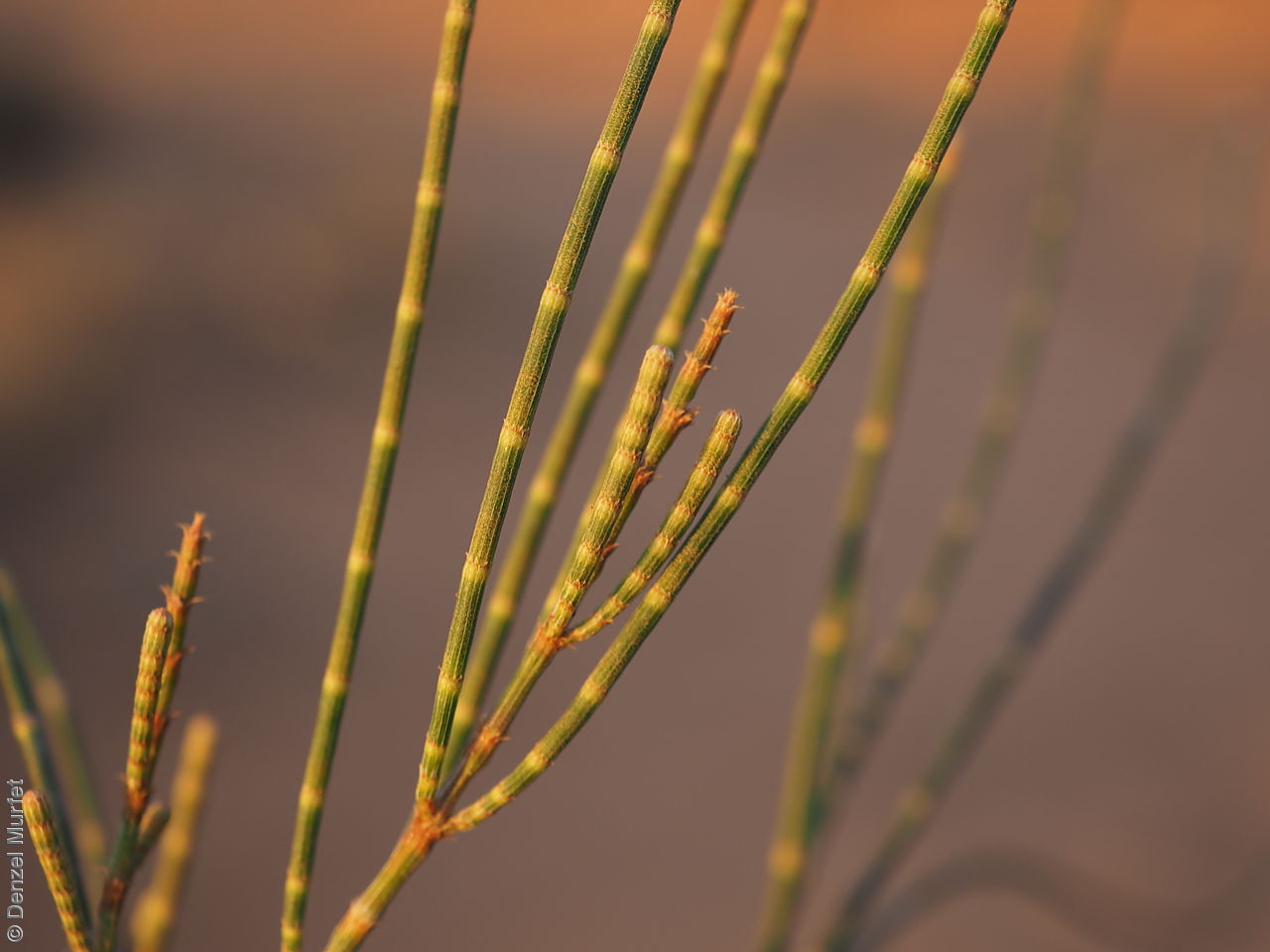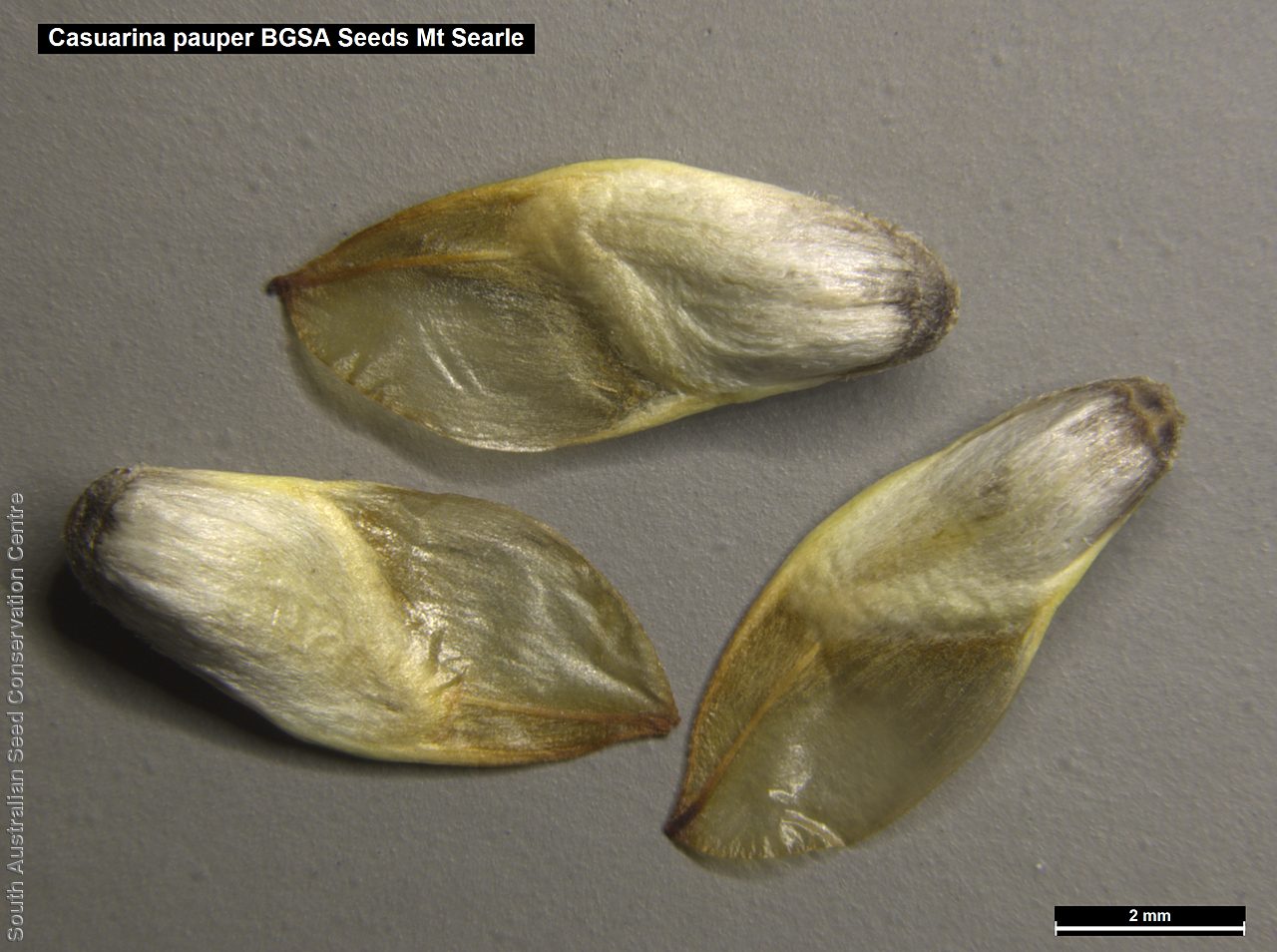














Botanical art
Prior names
Casuarina obesa
Casuarina cristata ssp. pauper
Casuarina lepidophloia
Common names
Black Oak
Belah
Etymology
Casuarina was first used by Rumphius (1743) in allusion to the supposed resemblance of the "foliage" of Casuarina equisetifolia to the plumage of the Cassowary, which is from the Malay 'kesuari', later being Latinised as Casuarius. Pauper from Latin meaning poor, referring to the depauperate habit of the species compared with Casuarina cristata, written in Ferdinand von Mueller's hand writing on the holotype.
Distribution and status
Found across much of South Australia, except on southern Eyre Peninsula, Kangaroo Island and the South-east growing in red-brown soils with light-textured topsoil and calcareous subsoil. Also found in Western Australia, Queensland, New South Wales and Victoria. Native. Common in South Australia. Uncommon in Queensland. Common in the other States.
Herbarium regions: North Western, Lake Eyre, Nullarbor, Gairdner-Torrens, Flinders Ranges, Eastern, Eyre Peninsula, Northern Lofty, Murray, Yorke Peninsula
NRM regions: Alinytjara Wilurara, Eyre Peninsula, Northern and Yorke, South Australian Arid Lands, South Australian Murray-Darling Basin
AVH map: SA distribution map (external link)
Plant description
Greyish trees to 15 m high, sometimes suckering from roots. Stem (looks like leaves) mostly spreading, to 25 cm long with stem segments (articles) to 17 mm long and 1.8 mm diameter; strongly waxy, shortly and densely pubescent, ribs flat or with slight median groove. Teeth (reduced leaves) 9–13, spreading or recurved on new shoots. Male spikes to 3 cm long, golden. Cones on peduncle to to 14 mm long, subglobular or cylindrical with cone body to 22 mm long and 15 mm diameter. Fruits are golden brown woody cylindrical cone with numerous large protruding valves. Seeds are yellow-brown ovoid seed to 8 mm long and 3 mm wide, including the thin papery wing. Seed embryo type is investing.
Seed collection and propagation
Collect seeds between January and December. Cones can be collected anytime as mature cones remain on the female plant. Collect cones that have closed valves from the lower part of the stem as these are more mature. Place cones in a tray and leave to dry for 2-3 weeks. This will allow the valves to dry and open releasing the seeds. Place the dried cones in a bucket and shake gently to dislodge the seeds. Use a sieve to separate seeds from the unwanted material. Store the seeds with a desiccant such as dried silica beads or dry rice, in an air tight container in a cool and dry place. Seeds are non-dormant, viable seed should germinate readily.
| Location | No. of seeds (weight grams) | Number of plants | Date collected | Collection number Collection location | Date stored | % Viability | Storage temperature |
|---|---|---|---|---|---|---|---|
| MSB | 2,600 (3.79 g) | 25 | 11-Sep-2008 | TST489 Eyre Peninsula | 75% |
Number of plants: This is the number of plants from which the seeds were collected.
Collection location: The Herbarium of South Australia's region name.
% Viability: Percentage of filled healthy seeds determined by a cut test or x-ray.